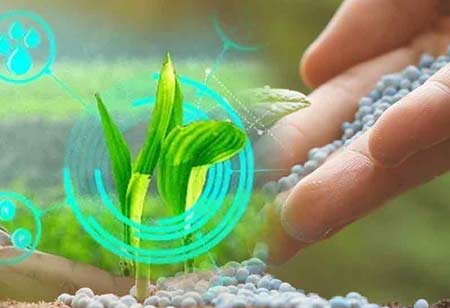Thank you for Subscribing to Agri Business Review Weekly Brief
The Benefits of Vertical Farming
Vertical Farming is that it is not weather-dependent, allowing you to achieve continuous year-round

By
Agri Business Review | Tuesday, May 31, 2022
Stay ahead of the industry with exclusive feature stories on the top companies, expert insights and the latest news delivered straight to your inbox. Subscribe today.
Vertical Farming can cut harvest times and increase volume without sacrificing flavor or quality, always maintained at a high level.
FREMONT, CA: Vertical Farming is that it is not weather-dependent, allowing you to achieve continuous year-round crop production without worrying about the influence of unfavorable weather conditions on quality, profile, and yield. Growers get certainty and peace of mind by farming in a protected, well-monitored, managed environment that produces repeatable, programmable output. Using breakthrough vertical farming methods, it is now possible to consistently create vast numbers and food quality. It enables commercial producers to commit to their clients' delivery timetables reliably. When a well-built and managed indoor vertical growing system is used, flavor and shelf life continuously increase.
Efficient use of space
Traditional farms, without a doubt, require fertile arable land. On the other hand, vertical farms can be designed and developed in any environment or location, regardless of weather or temperature extremes. It's also possible to reach higher output on a short land area because of their stacking grow systems, which allow them to expand upwards. Depending on the crop, one acre of the vertical farm might continuously produce 10 to 20 soil-based acres.
Reduce the amount of water you use
Compared to traditional methods, the hydroponic growing process utilizes less amount of water and, as a result, enhanced nutrients and fertilizers. Because the water is pure after use, it can be recycled and reused, saving money and reducing waste.
Friendly to the environment
Indoor Farming has the potential to be environmentally friendly because it drastically reduces the number of fossil fuels used to power farming equipment that isn't used to seed, fertilize, weed, or harvest crops. Vertical Farming also aids biodiversity because it does not alter the land surface, allowing the natural animal population that lives in and around farms to thrive.
Reduce your transportation expenses
When it comes to food manufacturing, the last-mile transportation is typically the most costly component of the supply chain. Crops are also frequently transported across continents and oceans. Growing the food closer to where the consumer lives have significant vertical farming benefits. It reduces transportation costs, CO2 emissions, and refrigerated storage requirements, resulting in fresher and more profitable produce.
Staff-friendly
Traditional Farming has earned the unwanted reputation of being a risky work. Indoor Farming certainly does not have the same occupational hazards as outside Farming because it does not use heavy machinery or chemicals, reducing the chance of harm.
Labor costs are minimal
To achieve excellent year-round output, fully automated indoor growing systems do not require a lot of physical labor. Even if manufacturing is scaled up, people with low-level skills will be necessary to sort and pack harvests, but labor overheads will remain modest.





